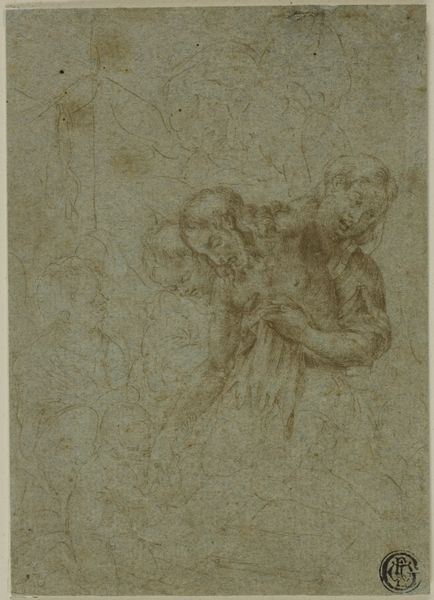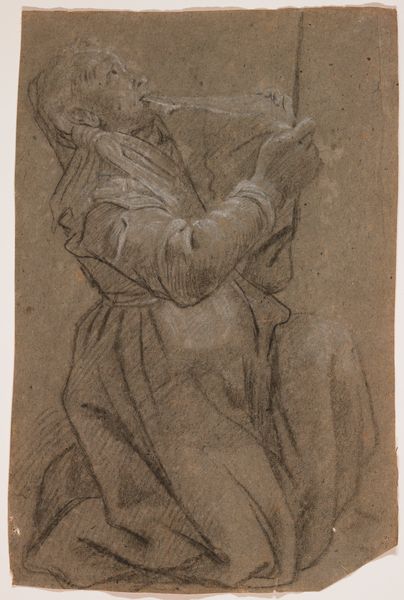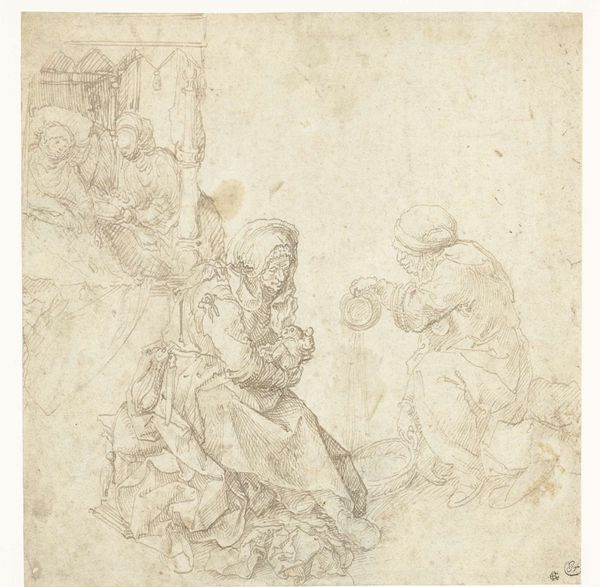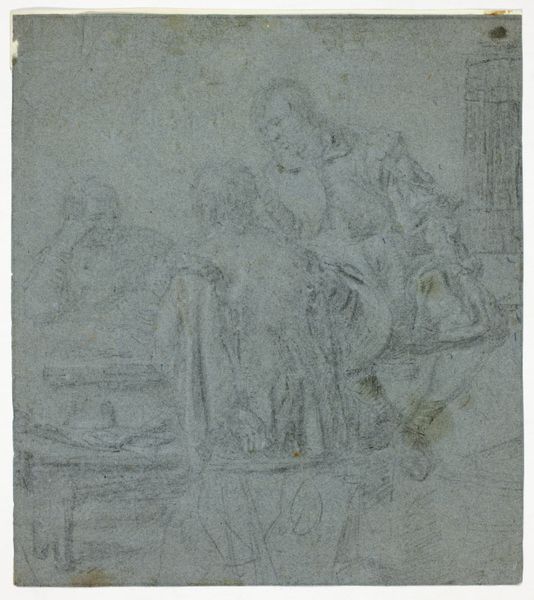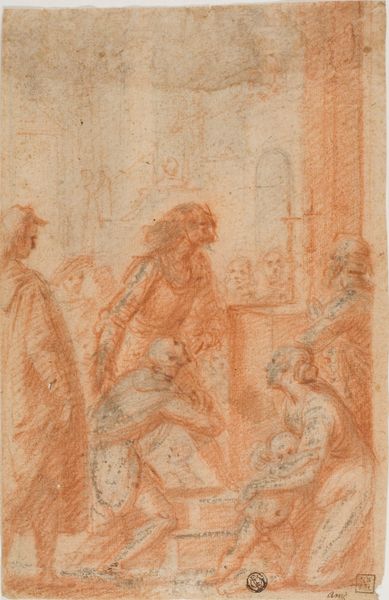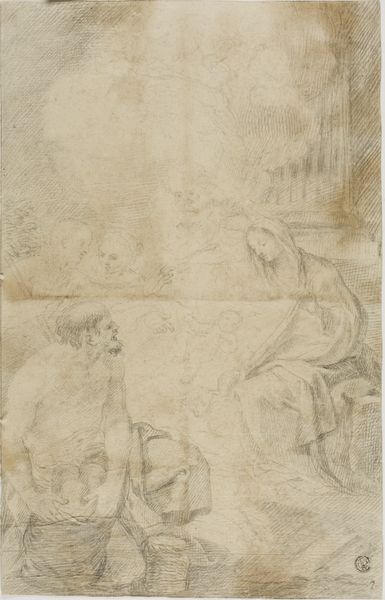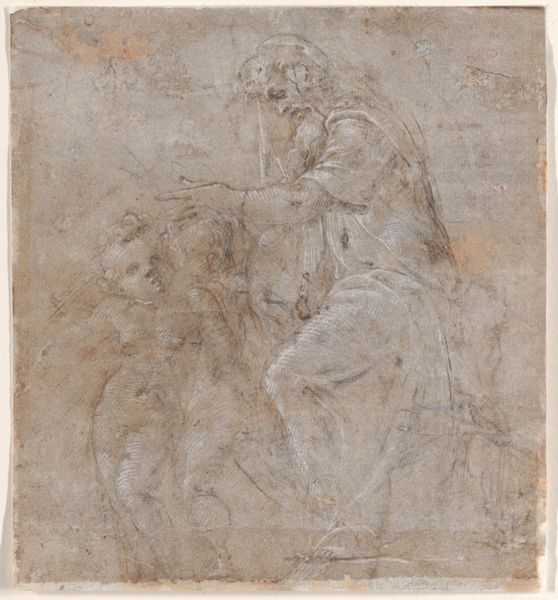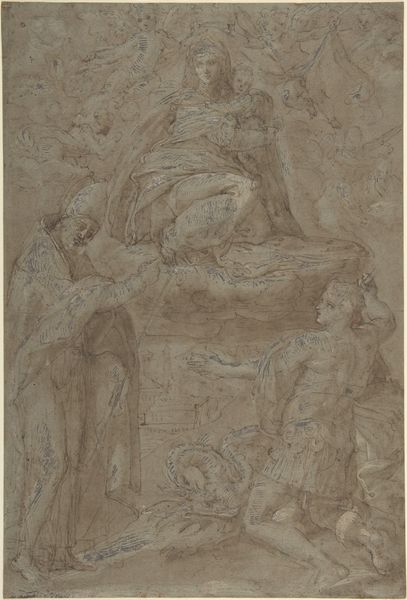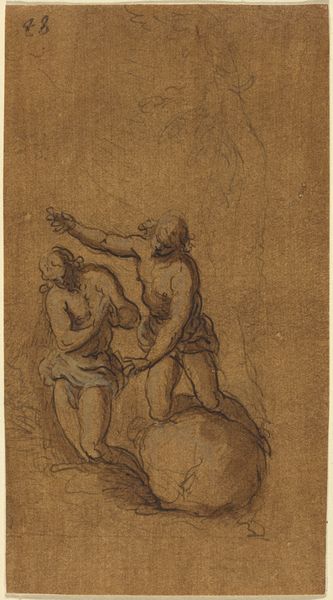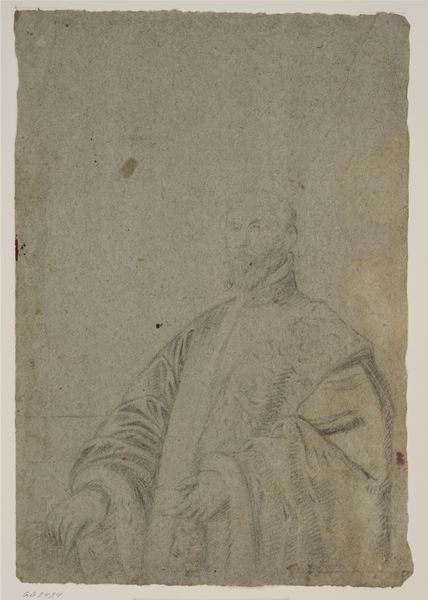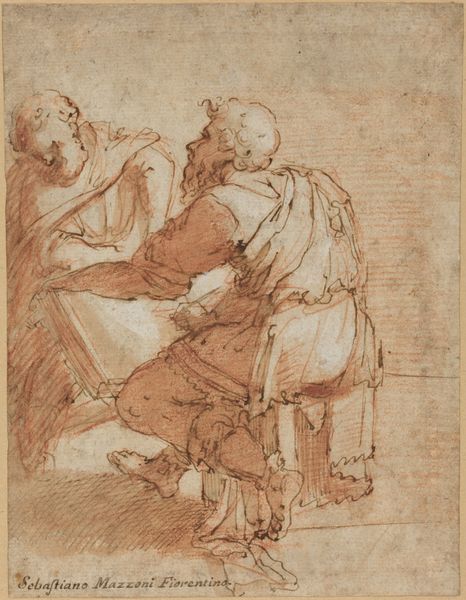
drawing, paper, pencil
#
drawing
#
narrative-art
#
figuration
#
paper
#
11_renaissance
#
pencil
#
history-painting
#
italian-renaissance
Dimensions: 8 7/16 x 5 5/8 in. (21.5 x 14.3 cm)
Copyright: Public Domain
Curator: What a fascinating study in tonality and implied form. Before us, we have "Noli me tangere," a pencil drawing on paper dating back to between 1580 and 1610, currently held here at The Metropolitan Museum of Art. Editor: It’s immediately striking – the stark, almost ethereal quality created by the medium against the blue paper. There's a fragility there that amplifies the intimacy of the encounter. Curator: Exactly. Now, consider this: the narrative unfolds through a complex dance of power and vulnerability. We are witnessing the resurrected Christ, but positioned as a figure of authority denying physical touch from Mary Magdalene. The “Noli me tangere”—touch me not— carries such weight in discussions around divine ascension versus earthly connection, and female agency within a patriarchal religious structure. Editor: The contrast in their poses is key, isn’t it? His upright stance radiates authority, his pointing hand, a command. She’s crouched, almost pleading. It’s interesting how much is communicated with so few lines. Curator: Indeed. Think about what the denial of touch symbolizes. Post-resurrection, Jesus exists in a liminal state, beyond the reach of mortal contact. It underscores themes about purification, spiritual awakening and the complicated power dynamics within religious experiences for women. The work encourages viewers to ask what sacred contact really entails. Editor: From a formal perspective, it also establishes hierarchy and emphasizes movement with few distinct lines: from his gesture, through her raised hands, the lines become more circular, grounding the work. It emphasizes visual rhetoric of divinity against raw human emotion. Curator: Absolutely. Its impact then and even now questions established hierarchies. As viewers we are placed right within their drama as well, making its impact far broader than religious art history, extending into discourse on the subjugation and potential of woman. Editor: Ultimately, the work creates an echo – the story, the drawing itself: raw emotion depicted via minimalistic execution; something very moving is being reduced, separated… the scene remains impactful, but deliberately detached. Curator: An echo which I hope our discussion resonates with our listeners today. Editor: I would only add that such an elegant composition is more charged with such raw story beneath its delicate, intentional composition.
Comments
No comments
Be the first to comment and join the conversation on the ultimate creative platform.
